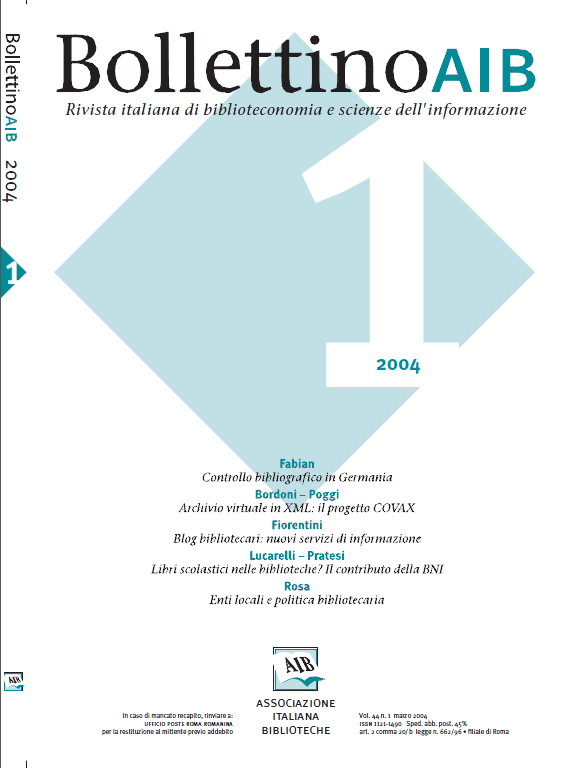A virtual archive in XML: the project COVAX
Main Article Content
Abstract
Arts and Humanities are sciences that are mainly based on the interpretation of cultural objects such as texts, paintings and works of arts, or historical/ethnological remains and monuments. Such objects are often unique, very valuable, fragile, irreplaceable and locally preserved in scientific collections at museums, in archives, or in urban and historic areas. Archives, museums and other cultural institutions do not simply conserve these objects. They also manage large documentations on them in the form of photo collections, expertise's, records, scientific studies and analyses. Both the objects themselves as well as the supplementary documentation are often accessible only through physical contact with users. Duplicates such as text documents (e.g., critical editions), or image documents (facsimiles, photographs) on paper are extremely expensive in terms of manpower, know-how and printing costs, and often cannot be justified for a small scientific audience. Electronic formats for object documentation in digital libraries might alleviate this access problem. The new challenge is now to provide these people with tools that are able to facilitate the fruition and investigation of the cultural heritage, so that even non-experts or communities of researchers may use up-to-date tools for both their personal work and for collaborative purposes. Technologically, the World Wide Web can serve both as a standard communication platform for such communities and as a gateway for document-centered digital library applications.
Therefore, improvement of the information systems for archives, libraries and museums should be considered from a global point of view. The necessary innovations should be introduced to guarantee the combined and common access to the information independently of its location, treatment type (bibliographical, archive or museum) or document typology, thus facilitating access to all information stored in them.
This paper presents the work carried out in the frame of COVAX (Contemporary Culture Virtual Archives in XML) financed by the European Commission in its IST (Information Society Technologies) Programme. The consortium kernel is composed of nine partners of different nature. They belong to five different European countries (Austria, Italy, Spain, Sweden and United Kingdom) and their roles in COVAX are:
– Content owners, i.e., cultural institutions holding their own information system that along the project have defined, implemented and validated the prototype (Residencia de Estudiantes, Universitat Oberta de Catalunya, University of Karlskrona/Ronneby, Biblioteca de Menéndez Pelayo, London and South Eastern Library Region, replaced by South Bank University, ENEA).
– Developers, i.e., companies that have provided to COVAX the design and development of the prototype (Software AG España, S.A, Angewandte Informationstechnik mbH, Salzburg Research mbH, South Bank University).
– Two of the partners, Salzburg Research mbH and South Bank University, have played simultaneously the content owner and developer roles.
– Residencia de Estudiantes has also played the co-ordination role.
Therefore, improvement of the information systems for archives, libraries and museums should be considered from a global point of view. The necessary innovations should be introduced to guarantee the combined and common access to the information independently of its location, treatment type (bibliographical, archive or museum) or document typology, thus facilitating access to all information stored in them.
This paper presents the work carried out in the frame of COVAX (Contemporary Culture Virtual Archives in XML) financed by the European Commission in its IST (Information Society Technologies) Programme. The consortium kernel is composed of nine partners of different nature. They belong to five different European countries (Austria, Italy, Spain, Sweden and United Kingdom) and their roles in COVAX are:
– Content owners, i.e., cultural institutions holding their own information system that along the project have defined, implemented and validated the prototype (Residencia de Estudiantes, Universitat Oberta de Catalunya, University of Karlskrona/Ronneby, Biblioteca de Menéndez Pelayo, London and South Eastern Library Region, replaced by South Bank University, ENEA).
– Developers, i.e., companies that have provided to COVAX the design and development of the prototype (Software AG España, S.A, Angewandte Informationstechnik mbH, Salzburg Research mbH, South Bank University).
– Two of the partners, Salzburg Research mbH and South Bank University, have played simultaneously the content owner and developer roles.
– Residencia de Estudiantes has also played the co-ordination role.
Article Details
Section
Articles

This work is licensed under a Creative Commons Attribution-ShareAlike 4.0 International License.
